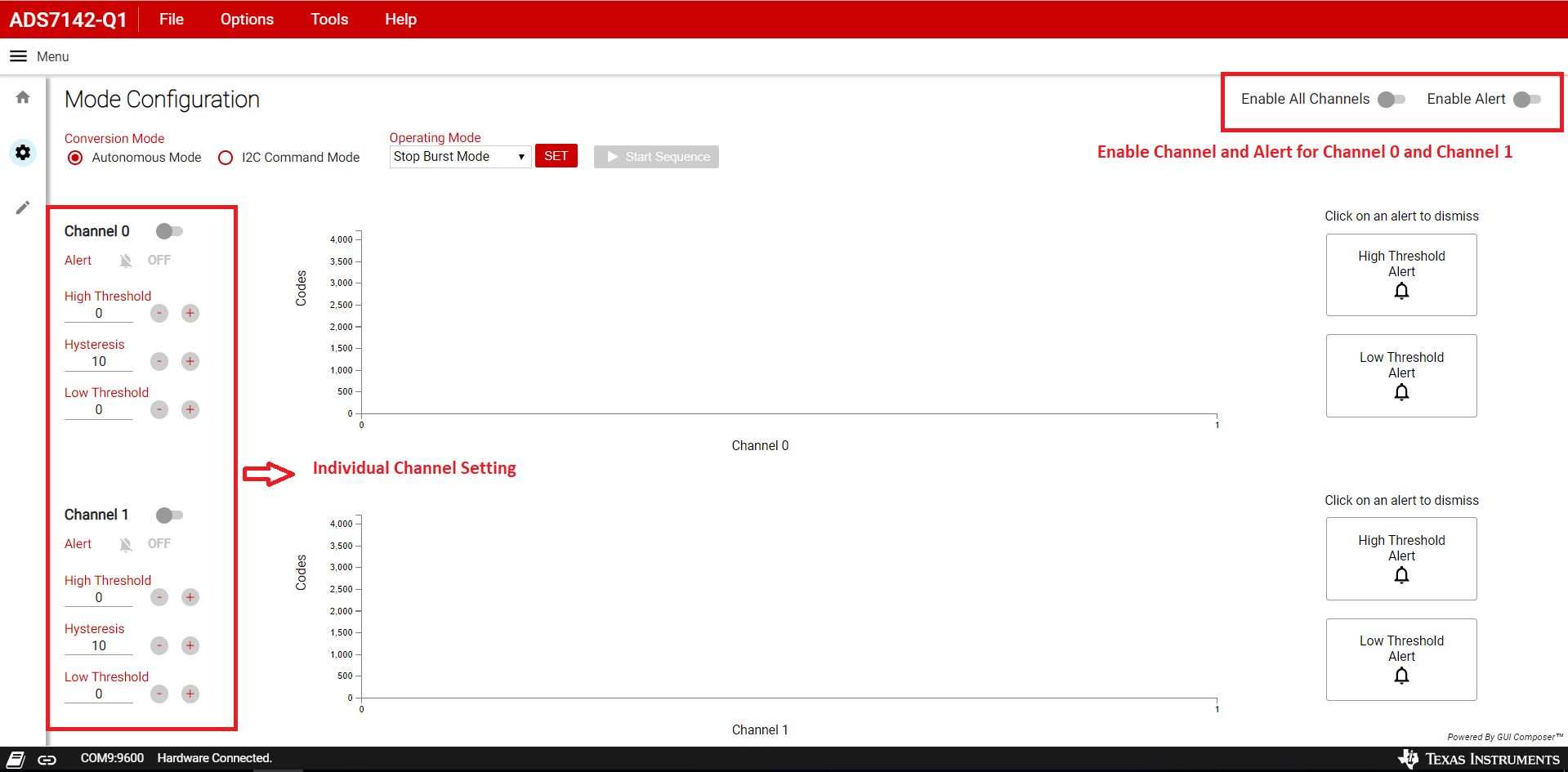SBAU321B November 2018 – June 2021 ADS7142 , ADS7142-Q1
3.3.3 Functional Mode
Figure 3-5 shows the functional mode page of the ADS7142-Q1 GUI. This page enables the user to navigate and SET various functional modes of the device (Autonomous and I2C command mode) and set channel-specific configurations. On the top right corner is an option to enable all ADC channels and enable alert functionality. TI recommends enabling these blocks and then to enable or disable the preferred ADC channel based on user preference.
 Figure 3-5 ADS7142-Q1 Mode Configuration Page
Figure 3-5 ADS7142-Q1 Mode Configuration Page